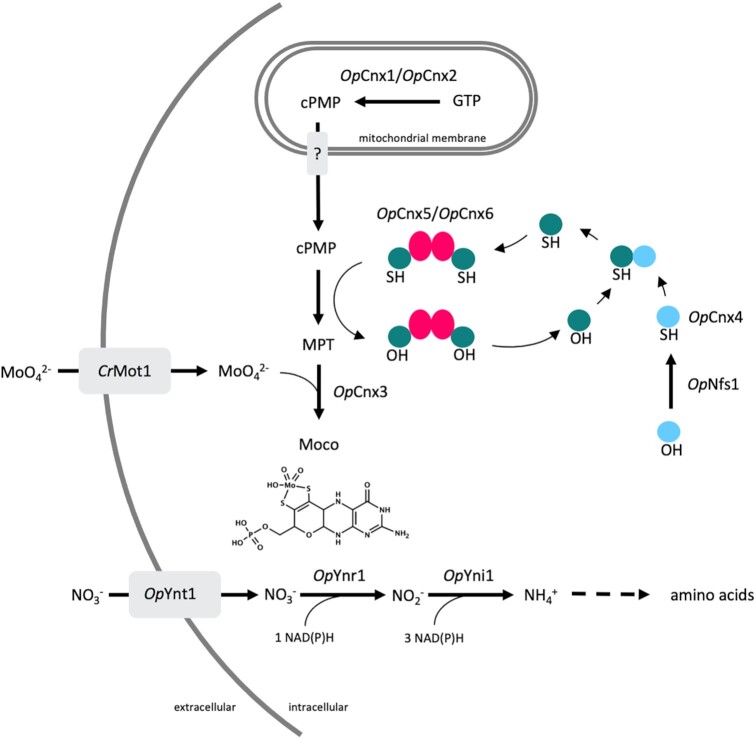CD Biosynsis is dedicated to provide our customers with best-in-class enzyme discovery and design services. We can expand the specificity of enzyme cofactors through our enzyme rational design service, where you can use enzymes for reactions that were not previously possible, or improve the efficiency and selectivity of enzyme reactions through the use of alternative cofactors.
Overview
Cofactor is the non-protein compound that assists enzymes in catalytic reactions, which plays an important role for the enzyme's catalytic function. Cofactor engineering is an emerging subfield of metabolic engineering, which focuses on enhancing the metabolic flow by regulating the concentration and form of cofactors, such as ATP/ADP, NADH/NAD+, NADPH/NADP+. It is worth noting that cofactor engineering is closely related to a variety of factors such as enzyme structure, function, and cofactor specificity. Therefore, the cofactor engineering strategy needs to take into account the target enzyme and its specific application during practical use.
 Fig 1. Schematic representation of the Moco biosynthesis pathway coupled to the nitrate assimilation pathway. (Perli T, et al., 2021)
Fig 1. Schematic representation of the Moco biosynthesis pathway coupled to the nitrate assimilation pathway. (Perli T, et al., 2021)
Our Services
Supported by a team of dedicated scientists, our EnzymoGenius™ platform provides cofactor engineering strategies to enhance enzyme activity based on the customized need of clients.
- Cofactor Mimicry
Designing or selecting natural cofactor analogs or mimics that may have better properties as alternatives to complement the natural cofactors of the enzyme, thereby enhancing the enzyme activity.
- Cofactor Regeneration Systems
Cofactor regeneration is usually required in the catalytic process of enzymes. Therefore, the development of cofactor regeneration systems and the design of effective cofactor regeneration pathways can improve the overall performance of enzymes.
- Directed Evolution
Use directed evolution techniques for enzyme screening to screen for enzymes with altered cofactor specificity or enhanced cofactor affinity. This process involves multiple rounds of random mutagenesis of the enzyme to screen for variants with better cofactor binding or utilization.
- Metabolic Engineering
Manipulate the cellular metabolic pathways to enhance the availability of precursors for cofactor biosynthesis. This may involve engineering the host organism to overproduce certain metabolites that are crucial for cofactor synthesis.
Application for Cofactor Engineering
- Identifying Target Enzymes
Cofactor engineering can be applied to the design and screening of enzymes for specific application areas, such as industrial processes, biocatalysts or therapeutic purposes.
- Understanding Cofactor Roles
In addition, cofactor engineering allows for a comprehensive analysis of enzyme structures and mechanisms, helping researchers to understand the role of cofactors in enzyme-catalyzed reactions.
- Designing Mutations
Moreover, cofactor engineering can be used for rational enzyme design or directed evolutionary approaches. For example, predicting changes in the binding affinity or catalytic efficiency of an enzyme to a cofactor after a fixed-point mutation.
CD Biosynsis is a company that specializes in the rational design of enzyme cofactors to meet the specific research requirements of customers across various industries globally. Our expertise lies in expanding the specificity of these cofactors, allowing for enhanced enzymatic activity and improved performance in various applications. If you are interested in our services, please contact us today.
Reference
- Perli, T.; et al. Engineering of molybdenum-cofactor-dependent nitrate assimilation in Yarrowia lipolytica. FEMS Yeast Res. 2021, 21(6):foab050.

































 Fig 1. Schematic representation of the Moco biosynthesis pathway coupled to the nitrate assimilation pathway. (Perli T, et al., 2021)
Fig 1. Schematic representation of the Moco biosynthesis pathway coupled to the nitrate assimilation pathway. (Perli T, et al., 2021)